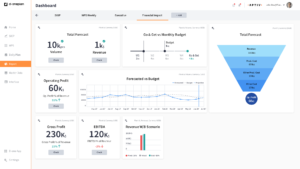Sales forecast: overcoming the key challenges
The current difficulties and the Digitalsoft approach

Company’s commercial instincts often drive them to boost availability of their products at their point-of-sales. By being more available than the next closest competitor, more inventory should bring higher sales. Right? Although counter-intuitive, more often than not companies fail to achieve higher sales by adding inventory. Volume, product mix and supply chain length all underpin the inventory challenge.
The barriers to effective sales forecasting
- Poor volume forecasting (over production)
- Poor product mix forecasting with no late-point-configuration capabilities (over production, obsolescence risk, wasted resource and machine capacity)
- Long supply chain requiring early forecast commitments (bull-whip effect multiplier)
- Production of goods not aligned with commercial priorities (late customer deliveries to request)
How does Digitalsoft approach these challenges
- Improve company’s ability to forecast demand for both volume and mix, by applying cognitive analytics.
- Align and synchronize end-to-end supply chain: replenishment signal, distribution, master production scheduling, production scheduling/priorities, material supply.
- Track and dynamically manage product lifecycles to continually align order with supply policies. Minimizing over & under inventory situations.
Key Benefits of an accurate Sales Forecast
- Better predict customer demand and growing product categories
- Improve delivery performance & sales while keeping inventory under control
- Scenario simulation and financial impact analysis
SIOP DASHBOARD AND
ROUGH CUT CAPACITY PLANNING REPORT

FINANCIAL IMPACT DASHBOARD
Do it with us!
d-one IBP module senses and analyses customer demand, checks constraints, reconciles it with supply and financials, then simulates.
Result is ‘best-fit’ order fulfillment plan. Learn more on:
Result is ‘best-fit’ order fulfillment plan. Learn more on:




